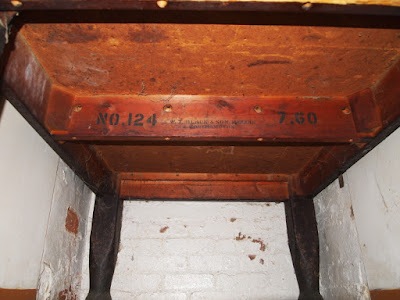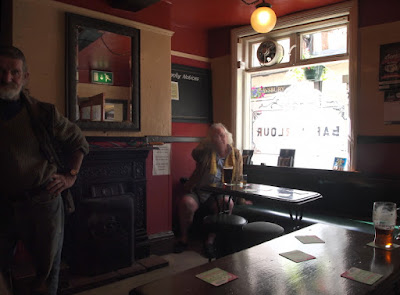Most of the major towns in the Three Counties have a strong and enduring skittles tradition. The county town of Worcester is no exception with a fair number of alleys dotted around its pubs and clubs, particularly in the suburban areas where the pubs retain a more traditional social function than the town-centre circuit. However, the two pubs featured here represent the extremes of the games current fortunes, a situation common everywhere as pubs struggle to survive and adapt in a tough commercial world.
Although it's safe to say that skittle alleys are not as common as they once were in Worcester, the game is still popular and supported at competitive level by several leagues, including the Worcester & District Skittles League, the slightly smaller Worcester Friendly Skittles League, and a Ladies League. Players from Worcester also compete in the Three Cities League, a regional 'Derby' against teams from Gloucestershire and Herefordshire.
 Throughout the traditional playing areas of the West Midlands and West Country, it's not uncommon to find skittle alleys in use most weekday evenings. Skittles is still very popular in certain parts of the country, and the consolidation that has resulted from numerous pub and club closures in recent years can make for some very busy skittle alleys. For many pubs this almost constant weekday skittles play can be the very lifeblood of the business, as the licensees of the West Midland Tavern in Worcester made clear to me on the Saturday afternoon I visited the pub.
Throughout the traditional playing areas of the West Midlands and West Country, it's not uncommon to find skittle alleys in use most weekday evenings. Skittles is still very popular in certain parts of the country, and the consolidation that has resulted from numerous pub and club closures in recent years can make for some very busy skittle alleys. For many pubs this almost constant weekday skittles play can be the very lifeblood of the business, as the licensees of the West Midland Tavern in Worcester made clear to me on the Saturday afternoon I visited the pub.The West Midland Tavern is located on the edge of the town centre, very much a friendly locals pub where sport, live music and entertainments pull in a good weekend crowd. During the week it's gaming that keeps the pub ticking over, and the skittle alley in particular, with teams accounting for upwards of two dozen customers on what may otherwise be a quiet night.
The West Midlands Tavern host enough teams in the various leagues to keep the alley and pub busy throughout the week. Each of the locked boxes shown below contain the pins and balls of a home team playing out of the pub, which must be quite a task for league secretaries to arrange the seasons fixture list without double-booking the alley.
It was in conversation with the licensee of the West Midland Tavern that I learnt of the imminent demise of the nearby Bridge Inn, and by the time you read this the pub is likely to have closed, quite probably for good. A board outside advertised a 'Last Chance' disco and karaoke that evening, and what was probably a very fine pub at one time was showing all the signs of neglect I've come to recognise in similarly doomed boozers.
The skittle alley at the rear of the pub had already been taken out of service some years ago. A sad sight, made all the more so by the vintage roll of honour hanging at the business end of the alley (below), recording the early 80's Bridge Inn House Champions in Cribbage, Darts, Dominoes, Pool, and of course Skittles. The alley has been marking time as a storage and band rehearsal space for several years now, and is apparently destined to be demolished for flats. I'm glad I popped in to record its passing, and hope the roll of honour finds a better home than in a skip. Many more closures like this and the West Midland Tavern will need another alley!






























